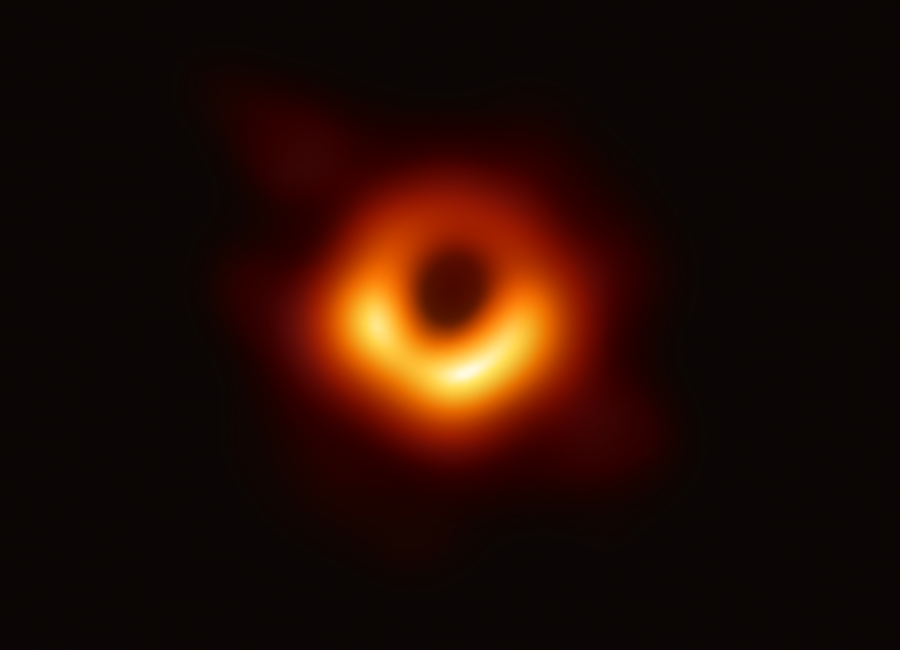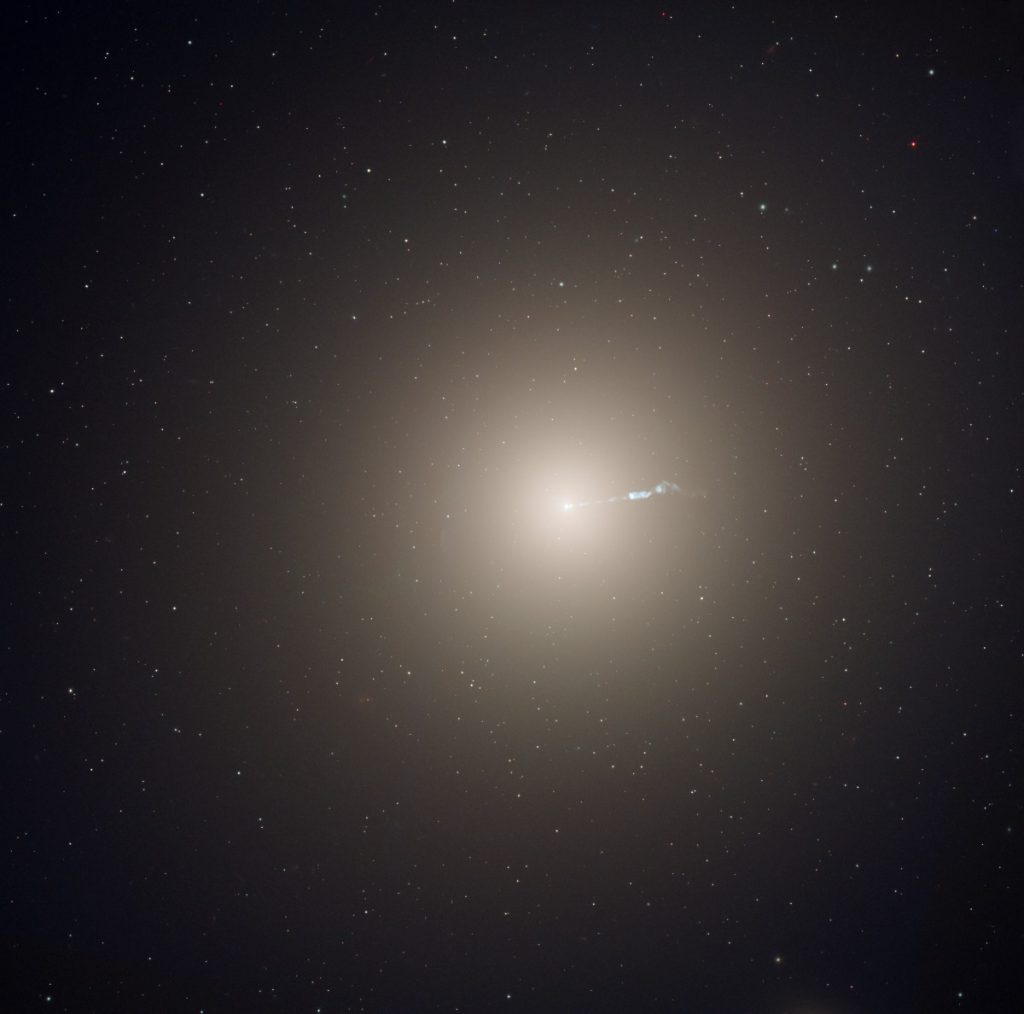Scientists release first close-up photo of a black hole

Black Holes are incredible beasts… Nothing can escape from them and yet they power quasars—the brightest beacons in the Universe. They warp space, bending light, and slow time to a stopping point. In their hearts lurks a singularity where the laws of physics break down. But they are shrouded in mystery. We have lots of evidence that they must exist, from Einstein’s equations of Gravity to the swirling dance of stars around them. But no one had ever seen a black hole. Until now…
We’re excited to share that today, Wednesday, April 10, scientists released the first close-up picture of the region around a black hole, an incredibly significant scientific result!
The photo came from a project called the Event Horizon Telescope (EHT). It is an international collaboration aiming to capture the first image of the region around a black hole by creating a virtual Earth-sized telescope. Radio telescopes used in this project are located in the United States, Mexico, Chile, Spain, and the South Pole.
The science team imaged the supermassive black hole in the center of the galaxy known as M87. M87 is an elliptical, or round-shaped, galaxy located about 55 million light years away in the direction of the constellation Virgo. It is a monster galaxy, weighing in at over 10x our own Milky Way (no slacker itself!). M87 sits in the center of the Virgo cluster of galaxies so we think it got so large by swallowing up other galaxies.
Just like its host galaxy, the M87 black hole is also a monster… it contains as much mass as about 6.5 billion of our Suns. It is one of the largest black holes we know about. The two facts are probably related. The rich environment of M87 provided lots of gas, dust, and stars for the black hole to feed on!

Wow! How Did they do it?
In short, radio waves!
No one sees light directly from the black hole… it is, after all, a place from which nothing, not even light, can escape! What the team imaged are radio waves (light) coming from gas in orbit around the black hole.
The process of combining light from multiple radio telescopes spread over thousands of miles (known as interferometry) made it possible to see finer details than possible with a single telescope. The farther the telescopes are spread the finer the details we can see. That’s why having radio telescopes from all over the world—including the South Pole!—was so important. Someday we might even have radio telescopes in space to make even sharper images.
So, what exactly am I looking at in this image?

The image shows the “shadow” of the black hole, the closest we can come to an image of the black hole itself. The black hole’s boundary—the event horizon from which the EHT takes its name—is around 3x smaller than the shadow it casts and measures just under 25 billion miles across. The team calculated that the original estimate of the mass of the black hole, 6.5 billion times the mass of our Sun, appears to be correct. They also determined that the black hole is rotating clockwise.
We can use this image to test Einstein’s Theory of General Relativity. Scientists ask, “Do we see what we were expecting to see?” For example, according to general relativity, black holes are expected to be spherical. The EHT team says that, to within 10 percent, the black hole appears to be spherical.
The ring of light in the image is related to the bending of light near a black hole. Light emitted by the gas swirling into a black hole can stream directly to our telescopes, but it can also wrap around the black hole, its path bent by the tremendous force of gravity. This bending, or “lensing,” of light produces a ring around the black hole at a distance where the photons can orbit just balanced between being captured by the gravity of the black hole and flying out to infinity. At the same time, the black hole’s fierce gravity piles the material orbiting the black hole up into a last stable orbit before it plunges quickly into the black hole. That can also create ring structures… so it’s a bit complicated!
Space is freaking awesome! Where can I learn more?
From April 10-14, 2019, visit us here at the Adler Planetarium and interact with our facilitators as they present fun activities about how we study the Universe using a type of light that our eyes cannot see: ultraviolet light. Or view our small temporary addition (starting 4/12) on black holes in our Telescopes: Through the Looking Glass exhibition!
Then check out our Space Visualization Lab to interact with Adler astronomers, cutting-edge images, and visualizations about the black holes at the centers of our Milky Way Galaxy and M87!
You can also take part in a Zooniverse.org citizen science project to help scientists study images taken using infrared light and gamma rays:






